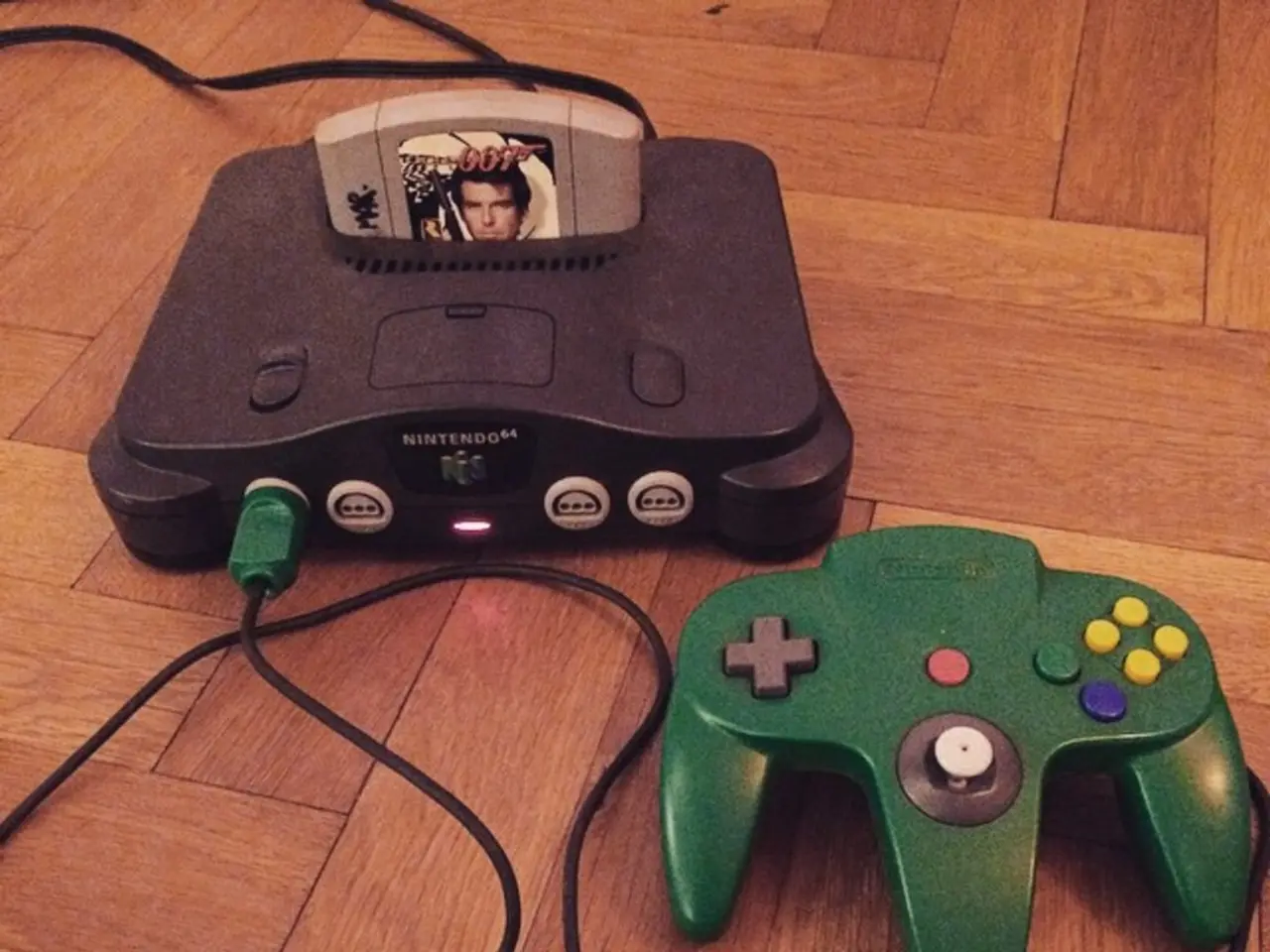Evolution of the Classic Game, Pong
In the annals of gaming history, a pivotal moment occurred in 1966 when Ralph H. Baer, a pioneer in the industry, invented the prototype for the first electronic video game system - the "Brown Box." This revolutionary invention would later be commercialised as the Magnavox Odyssey in 1972, marking the dawn of home video game consoles [1][5].
Before Baer's groundbreaking invention, electronic interactive games existed, such as the cathode-ray tube amusement device patented in 1947 by Thomas T. Goldsmith Jr. and Estle Ray Mann. However, it was an analog device without digital computing or memory and is not considered the first video game [3].
In the early 1970s, Nolan Bushnell and Ted Dabney made their mark on the gaming world. They created Computer Space (1971), the first arcade video game, and later, the hit Pong (1972) as an arcade game inspired by Baer’s table tennis concept [1][5].
Here's a brief rundown of the key players and their contributions:
| Inventor | Year | Invention | Significance | |-----------------|-------|----------------------------------|--------------------------------------| | Ralph H. Baer | 1966 | Prototype "Brown Box" / Magnavox Odyssey (1972) | First electronic video game system for home TV | | Nolan Bushnell | 1971 | Computer Space | First arcade video game | | Nolan Bushnell & Allan Alcorn | 1972 | Pong | First commercially successful arcade game inspired by Baer’s concept |
As the industry grew, other companies entered the fray. National Semiconductor and MOSTek, for instance, developed their own chips, but none could match the momentum of General Instruments. The latter created the single-chip Pong game, the AY-3-8500, which could play multiple games like soccer, squash, and rifle games with the right equipment [5].
Magnavox, with the help of Texas Instruments, began producing new games using integrated circuits, a move aimed at reducing production costs. This shift led to the creation of various products, including the Odyssey 2000 and 3000, Radio Shack's TV Scoreboard, and Sears' Hockey Pong [5].
The success of these early video games was not without its legal battles. Magnavox sued Atari over the Pong game, and Atari eventually struck a deal to be considered a licensee for $1.5 million and other concessions [5].
Looking back, it's clear that Ralph H. Baer's invention in 1966 was the catalyst for the video game revolution. The first commercial release followed in 1972 with the Magnavox Odyssey, paving the way for the gaming industry as we know it today.
References: [1] Kline, S. (1994). Consoles: A Concise History of Video Games. Oxford University Press. [3] Fullerton, T. (2008). A History of Video Games (Inventors). ABC-CLIO. [5] Stern, D. (2002). High Score! The Illustrated History of Electronic Games. Bulfinch Press.
Radio electronics played a vital role in the development of video games, as the first electronic video game system, the "Brown Box" by Ralph H. Baer, was based on hardware technology. The impact of this invention went beyond the initial home video game console market, with gadgets such as the AY-3-8500 single-chip Pong game by General Instruments also being a result of this technological advancement.




